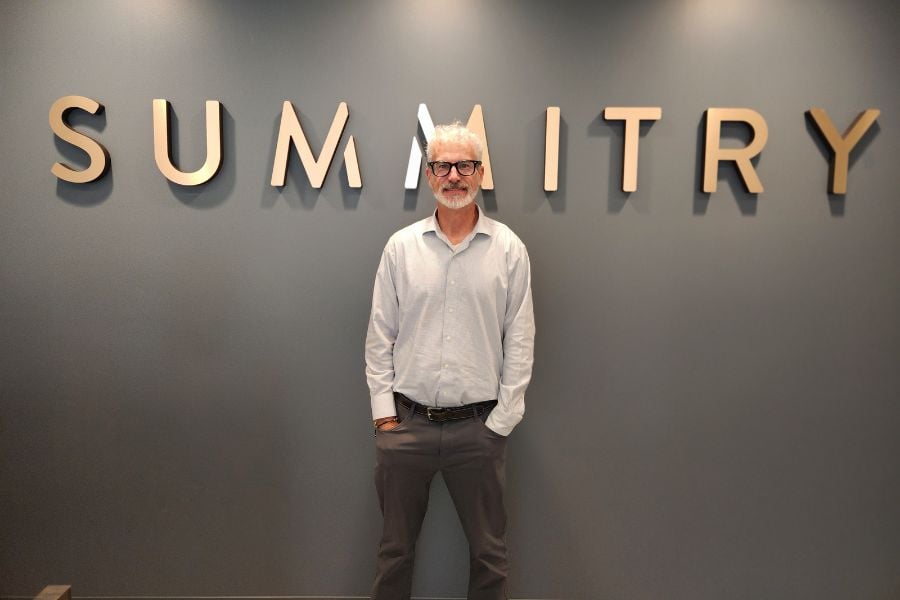

Summitry, which recently celebrated its 20th anniversary, began as an investment management firm under Charles Schwab in 2003. Over the years, it has evolved to offer comprehensive financial planning services, with the help of CEO Colin Higgins.
When asked what he believes is their main driver of success, Higgins pinpoints one very specific thing.
“It's really about building meaningful relationships with our clients," says Higgins. "Especially here in the Bay Area, which is an amazing place but also very challenging due to high expenses and the cost of living."
The evolution of Summitry was almost a mirror reflection of the growth and wealth creation of the Bay Area and the constantly changing needs of their diverse client base.
"Silicon Valley and the Bay Area have a boom-bust culture, from the dawn of semiconductors to the dot-com era, and now we're seeing it again with artificial intelligence and the tremendous opportunities that has created. There’s also the potential for challenges and bad outcomes. If you look at some of those companies that were touted as great businesses back in the dawn of the internet, many of them are no longer with us. [However] out of that some of the most powerful and sustainable companies have emerged and we fully expect that to happen again.”
And while AI continues to change the zeitgeist, it can’t be used to replicate that all important human touch in the sector. Technology, as Higgins points out, should be used to elevate those client relationships – not manage them entirely.
“[It’s about] meaningful relationships, understanding goals and objective and what's important to them on a human level,” he tells IN. “At the end of the day, we're seeing a lot of larger players entering into this space that don't necessarily have that localized knowledge to take care of the unique needs of our clients.
“We have the deep roots here. We understand the dynamics of this unique ecosystem and we can be equally valuable in helping them take care of those needs. It's a people business. Stocks and bonds are the vehicle but the reality is it's all about human interaction and relationships.”
The evolving financial goals of Higgins’ clients have seen the firm adapt their internal strategies too. And, given the dynamic nature of the Bay Area, they’ve been navigating the complexities of concentrated stock positions and the unique challenges the market continues to present.
"Clients often have highly appreciated stock positions, but their compensation and employment are also tied to the same tech companies,” says Higgins. “This creates a highly concentrated risk in both their wealth and their income. We assist them in envisioning a future where they can transition to a work-optional environment.”
Many of Summitry's clients are highly motivated and driven individuals who face the question, "I love what I do, but I can't do this forever. What do I do next?" For Higgins, here he emphasizes the importance of helping his clients pinpoint their goals and work towards achieving them.
"It's about understanding how they want to spend their time, maintain or build a legacy, transition wealth to the next generation, or engage philanthropically. These are the conversations we have to help them identify their non-financial goals. The human element—what gives meaning and fulfilment post-career—is where we spend a lot of time. We help them design their futures and secure them, acting almost like behavioral psychologists, counsellors, coaches, and motivators for confidence.”
And it’s Higgins’ tech clients that present even more distinctive challenges, mainly due to their highly concentrated stock positions and compensation structures.
“They typically have stock option plans and significant tax consequences to consider before making decisions," says Higgins. "We work to come up with sensible plans that mitigate the risk of losing wealth due to downturns in their companies or the local economy. The concentration of wealth and income in one company means that losing a job can also mean losing the value of their portfolio holdings simultaneously.”
Looking ahead, Higgins identified three key trends in wealth management: consolidation, commoditization, and complexity.
“The industry is seeing significant consolidation, with private equity firms and large national firms acquiring smaller RIAs. What was once a unique, boutique relationship can become impersonal as firms scale up. Access to various investments, including alternatives once reserved for elite investors, is becoming more common.”
The increasing complexity of clients' needs is also on Higgins and his team’s minds moving further into 2024.
"Everything is getting more complex, from clients' financial objectives to the technology used to manage these needs. The financial landscape used to be straightforward, but more wealth adds more layers of complexity.”
To address these trends, Summitry focuses on what cannot be commoditized: relationships.
"We double down on understanding our clients' unique goals and needs at a human level," adds Higgins. "Our understanding of the Bay Area's unique market dynamics is a significant advantage. The reaction to large-scale consolidation may lead to a return to boutique, personalized service, similar to the industry's origins. We always seek the best technology partners to navigate the market's complexity, offering our clients better visibility and making our business operations more efficient.”

Relationships are key to our business but advisors are often slow to engage in specific activities designed to foster them.

Whichever path you go down, act now while you're still in control.

Pro-bitcoin professionals, however, say the cryptocurrency has ushered in change.

“LPL has evolved significantly over the last decade and still wants to scale up,” says one industry executive.

Survey findings from the Nationwide Retirement Institute offers pearls of planning wisdom from 60- to 65-year-olds, as well as insights into concerns.
Streamline your outreach with Aidentified's AI-driven solutions
This season’s market volatility: Positioning for rate relief, income growth and the AI rebound
